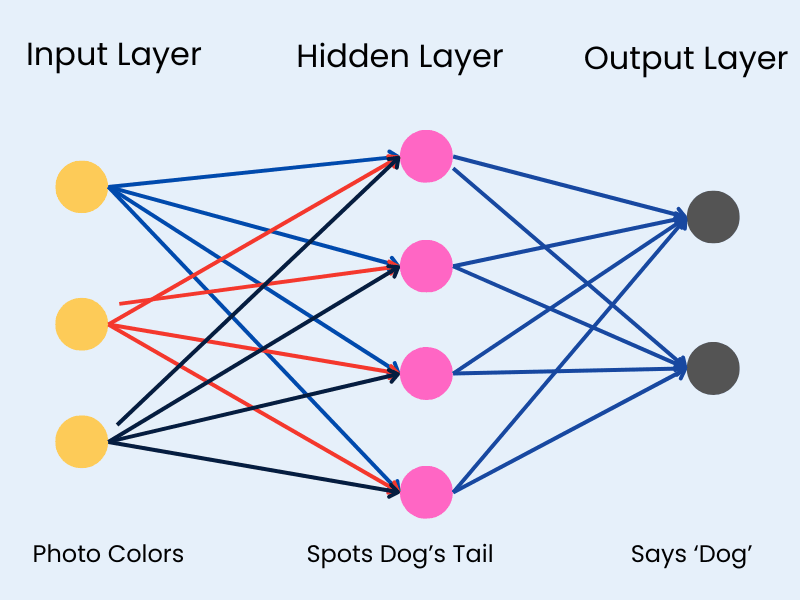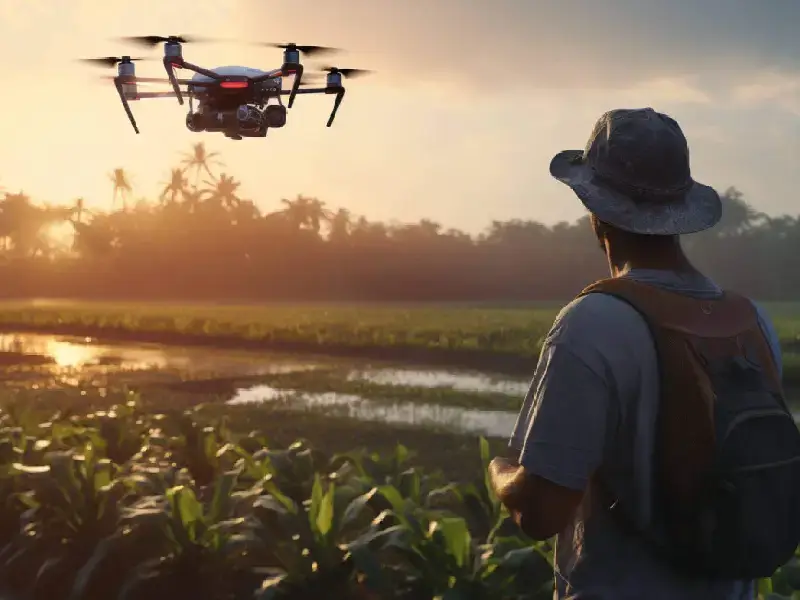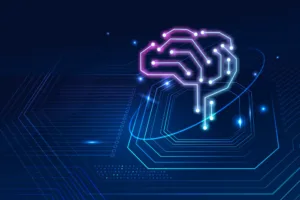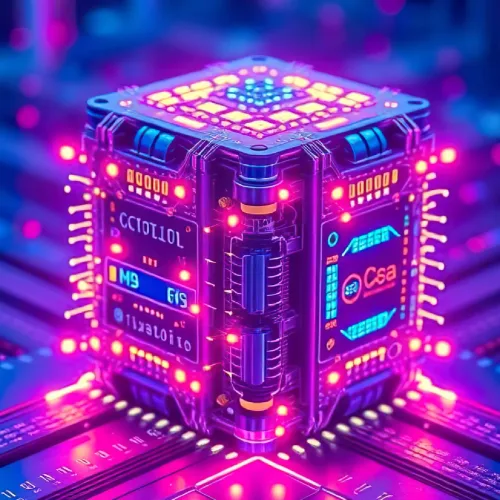Your brain works every day to solve problems, such as recognizing a friend’s face. Imagine now something that does the same thing, but instead of the brain, it is a computer whose function is set by artificial neural networks. These are the technologies driving artificial intelligence. They are the core of all new concepts and ideas. This includes self-driving cars, voice assistants, and many more innovations. I am excited today to speak to you with the introduction to artificial neural networks. In this discussion, you will learn how ANNs work. You will explore how they are changing AI. You will also understand their roles in today’s latest innovations. Furthermore, you will discover some different methods to play with these networks yourself.
Neural networks are like the brain of AI, learning from examples — Yann LeCun, AI expert.
So, let’s jump in and see what makes ANNs so cool!
What Are Artificial Neural Networks?
Artificial neural networks function like a computer’s brain. Just as humans think to solve problems, these networks “think” to fix complex challenges. For example, ANNs help AI detect dogs in images or translate text from English to Urdu. They use connected “neurons” to process information. Imagine ANNs like a group passing notes while solving a puzzle. Every note gets you closer to the answer. Google uses ANNs to refine search results. For this reason, ANNs capture patterns that humans might miss. They make AI smarter and enable it to do a lot of work.
How Do Neural Networks Work?
Artificial neural networks work miracles, even with the simplest tasks in straightforward settings; let’s take a deeper dive into their operations, so that you can observe this magic.
The Parts of ANNs
ANNs consist of three main components: neurons, layers, and weights. Similar to students in a classroom where each one has a function, neurons also perform some particular functions. Layers facilitate the collective form of neurons referred to as input, hidden, and output layers. The input layer functions to receive data, for example, colors imputed by an image. The hidden layers process and analyze patterns, like recognizing features such as a dog’s ears. The output layer generates an answer: for example, “This is a Dog.” Weights determine the strength of a connection in ANN. Weights control how much impact one neuron’s output has on the next. This is how further explanation continues.
- Neurons: Handle small bits of info.
- Layers: Put neurons in groups.
- Weights: Make connections stronger or weaker.
These parts team up to learn from data. Next, let’s see how that learning works.

How ANNs Learn
ANNs learn by correcting their errors. They make a guess, test if it is false, and try once more. This trick, called backpropagation is very similar to adjusting the recipe for making lemon juice. If the lemon juice is oversour, you add sugar and then taste again. ANNs vary weights for improvements. For example, they can learn to detect cancer in X-rays. One study conducted at MIT has proven that ANNs can now even compete with doctors in this case. Now please take a look at this table:
| Part | Job | Example |
|---|---|---|
| Input layer | Takes data | Photo colors |
| Hidden layer | Find patterns | Spots a dog’s tail |
| Output layer | Gives the answer | Says “Dog” |
By tweaking weights, ANNs get super accurate. Now, let’s see why this matters.
Why Do Artificial Neural Networks Make AI Accuracy?
Artificial neural networks will be the ones making AI intelligent by detecting anomalies. The layers, of which ANNs make collections, break down larger problems into increasingly small portions. For example, ANNs aid self-driving cars in identifying things like stop signs or even people. Like Tesla self-driving cars, medical units use ANNs to detect diseases in scans faster than humans can. On the other hand, ANNs take a large amount of data and produce with little input, wherein false data means false output results from the models. Nonetheless, ANNs are good in areas such as bank fraud detection or understanding your voice.
Neural networks learn from data to make AI stronger — Andrew Ng
They turn up as the wonderful chips that transform complex data into wise decisions in life.
Types of Neural Networks
ANNs are heterogeneous. A variety of different kinds are there for different purposes. Let’s check out the big three.

1. Feedforward Neural Networks
Feedforward networks are definitely the simplest network architectures. They transmit data fully end-to-end. They are extremely useful for simple applications such as classifying emails to spam or not spam. There are many applications that use such systems for fast processing of customer reviews.
2. Convolutional Neural Networks (CNNs)
They are into images. Convolutional networks try to find some stuff in that image, like a face or a shape. That’s how they use it in your phone to unlock it with your face. They also use it in hospitals for reading X-rays. Good for any scene.
3. Recurrent Neural Networks (RNNs)
Recurrent networks work with sequences, like words in a sentence. They’re perfect for understanding speech or predicting weather. Siri uses RNNs to hear you clearly. Here’s a quick list:
- Feedforward: Easy, for simple tasks.
- CNNs: Best for photos and videos.
- RNNs: Great for words or time-based stuff.
Each type fits a special job. Now, let’s talk about trying ANNs yourself.
Applications of Introduction to Artificial Neural Networks in 2025
Artificial neural networks power amazing things in 2025. They make life better in fields like healthcare and farming. Let’s check out how ANNs shine in these areas as part of our Introduction to artificial neural networks.
Redefining Healthcare
Healthcare is being made smarter by neural networks. They help doctors to diagnose and plan treatments much faster than conventional methods. For example, convolutional neural networks analyze medical images such as X-rays in the search for problems like tumors, doing so with great accuracy. Recurrent neural networks predict how patients will fare with checks against their past health records to assist doctors in taking faster, smarter decisions.
Several ANNs also combine CNNs and RNNs. These hybrids analyze images and health data to predict disease progression, so lives are saved and costs from improper diagnosis or prolonged hospital stays are reduced. Hence, ANNs are able to speed up and enhance healthcare.
Agriculture and Food Production

Neural networks have been developed to help farmers grow more food. They check on crops and forecast weather events for their better planning. For instance, CNNs analyze satellite images to diagnose soil health, while RNNs predict whether environmental changes would permit the right planting time.
In 2025, ANNs will also be deployed to control pests. Drones will take images of the farms, while the ANNs will identify the pests early. Farmers use fewer chemicals in this approach, which helps the environment and increases food supply. So much can be done through neural networks in agriculture!
Common Problems and Easy Fixes
ANNs can sometimes get very playful as well. Overfitting is one of the problems that happens when networks memorize the data, not learn it. Such a big data set slows down training. Start small. Save your efforts with a pretrained network-it’s like using a mix to bake a cake rather than from scratch. Using dropouts and other tricks helps to prevent overfitting. Experts say that small, varied data really helps. The following table summarizes solutions:
| Problem | Fix |
|---|---|
| Overfitting | Use dropout |
| Slow training | Try smaller networks |
By keeping things simple, you’ll avoid most trouble. Plus, playing around teaches you heaps.
New Trends in Neural Networks for 2025
Artificial neural networks keep getting better! In 2025, exciting changes make them smarter and easier to use. As part of our Introduction to artificial neural networks, let’s look at two cool trends shaping the future of AI.
Neuro-Symbolic AI

Neuro-symbolic AI is a blend of neural networks combined with intelligent reasoning rules. It is the amalgamation of learning through data and human similar logic, where actual evidence or fact acts in conjunction with reasoning. This combination results in making decisions transparent and precise, providing assurance in areas where trust is required, such as law.
For example, these models check old cases similarly as done in legal works using neural networks and use good and sound logic to guess what would happen in new cases. This in itself brightens the end product and guarantees its trustworthiness. Not only this, but it also resolves issues regarding neural networks being difficult to understand.
Neural networks with logic are like a brain with a rulebook — Yann LeCun, AI expert.
So, this trend makes AI both smart and open.
Energy-Saving Neural Networks
A series of experiments on the use of neural networks, which basically consume less power, is going to actually happen in 2025. Smaller and lighter models are created and made possible by means of trimming the sides or miniaturizing data. All these things help AI to work on tiny devices while preserving the work power behind.
Such as portable health gadgets use these networks to check your heart or blood sugar in real time. Because they run on super low power, they will work even farther. That means everyone gets awesome technology no matter where they’re from! Such amazing trends in neural networks are bringing AI to everyone!
Conclusion
Artificial neural networks make AI amazing by acting like a brain. They use neurons, layers, and weights to learn from data. As a result, they power cool stuff like self-driving cars and voice assistants. From feedforward to convolutional and recurrent networks, each type has a special job. Even with challenges like overfitting, you can start small and learn fast. This introduction to artificial neural networks shows you the basics. So, grab TensorFlow, try a project, and have fun building your own AI!




